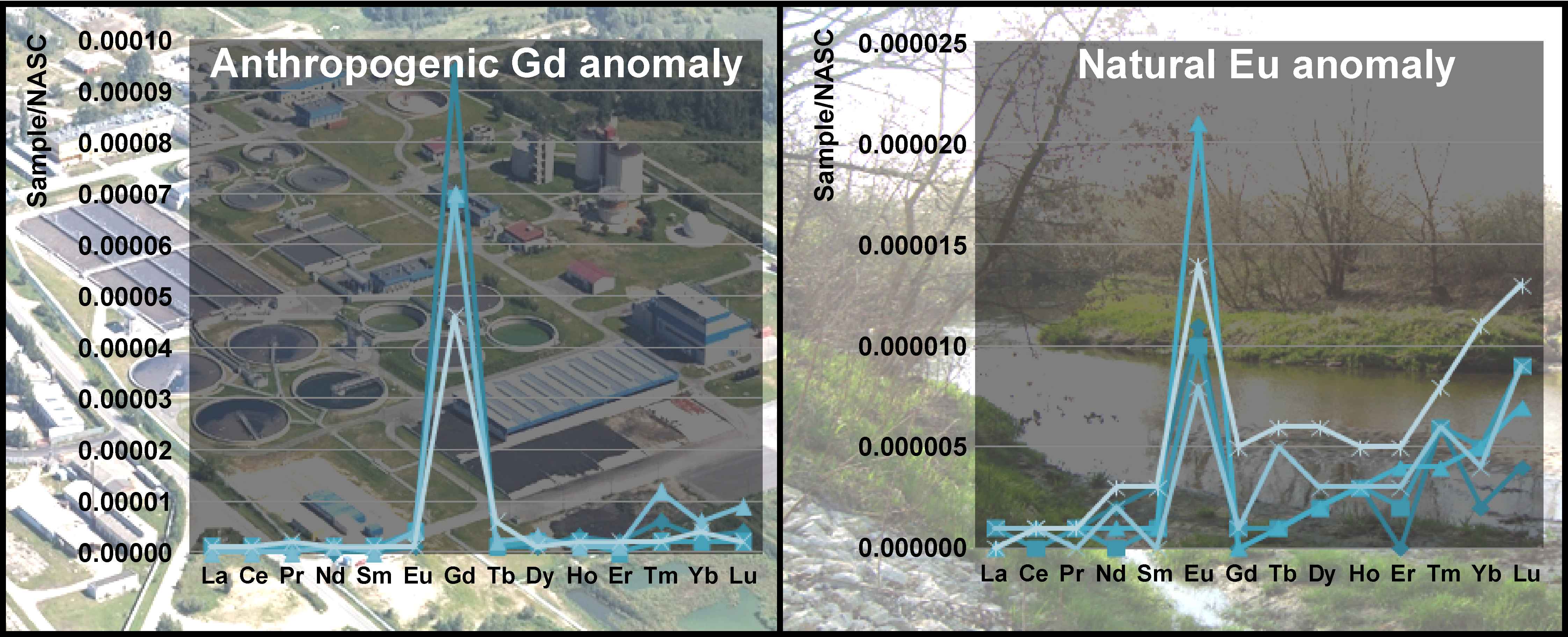The use of gadolinium and europium concentrations as contaminant tracers in the Nida River watershed in south-central Poland
DOI:
https://doi.org/10.7306/gq.1241Keywords:
rare earth elements, wastewater effluent, Nida River drainage system, anthropogenic gadolinium, geogenic europiumAbstract
This paper presents the results of rare earth element (REE) determinations in the Nowiny wastewater treatment plant (NWWTP) effluents and Nida River system waters of the southeastern Kielce Region (south-central Poland). Of the REE examined, gadolinium and europium turned out to be very useful for pinpointing anthropogenic and geogenic sources. Anthropogenic gadolinium (Gdanth), used as a contrasting agent in magnetic resonance imaging (MRI), is released from the NWWTP into the river drainage system. This micropollutant is traced downstream over the distance of about 15 km. This river stretch is characterized by a strong positive NASC-normalized Gdanth anomaly with the GdNASC/GdNASC* ratio above 1.1 (1.80–15.57) and the Gdanth input varying from 44 to 94%. Two additional positive Gdanth anomalies recorded in the rivers Bobrza and Nida point out to mixing of effluents derived from the NWWTP and other local wastewater treatment plants. In contrast, the Gdanth-uncontaminated waters upstream, or downstream far away from the NWWTP display a distinct positive NASC-normalized Eu anomaly highlighted by a high Eu/Eu* ratio in the range of 2.87 to 29.70. The lack of Gdanth anomaly upstream from the NWWTP also indicates that there is no leakage of municipal sewage from the sanitary collector sewer into the Silnica River. Thus Gd as a contaminant may be effectively used as a tracer in similar pollution studies because it is relatively simple and cost-effective to discriminate between contaminant concentrations and normal background concentrations.
Downloads
Published
2015-07-09
Issue
Section
Articles
License
Authors who publish with this journal agree to the following terms:- Authors retain copyright and grant the journal right of first publication with the work simultaneously licensed under a Creative Commons Attribution License that allows others to share the work with an acknowledgement of the work's authorship and initial publication in this journal.
- Authors are able to enter into separate, additional contractual arrangements for the non-exclusive distribution of the journal's published version of the work (e.g., post it to an institutional repository or publish it in a book), with an acknowledgement of its initial publication in this journal.
- Authors are permitted and encouraged to post their work online (e.g., in institutional repositories or on their website) prior to and during the submission process, as this can lead to productive exchanges and earlier and more frequent citation of the published work (See The Effect of Open Access).





